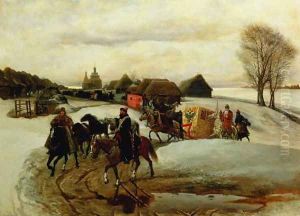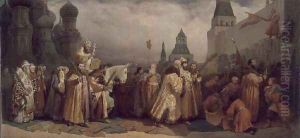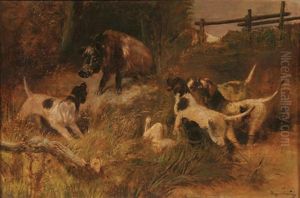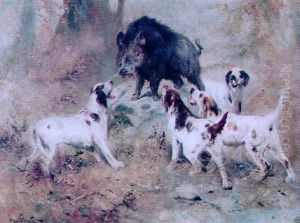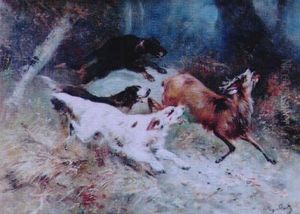Vyacheslav Grigorievich Shvarts Paintings
Vyacheslav Grigorievich Shvarts was a Russian artist known for his significant contributions to genre painting and portraiture during the 19th century. Born on May 24, 1838, in Yekaterinburg, Russia, Shvarts was exposed to art at a young age, as his father was an amateur artist and engraver. This early exposure laid the foundation for his future artistic pursuits.
Shvarts's talent became evident early on, and he was enrolled in the Imperial Academy of Arts in Saint Petersburg. He studied under the guidance of renowned artists such as Alexey Tarasovich Markov and Pavel Chistyakov, which had a profound influence on his artistic development. During his time at the academy, Shvarts was recognized for his exceptional skills and received several awards, including a gold medal for his painting 'The Return of the Prodigal Son' in 1861. This recognition allowed him to travel abroad to further his education, which was a customary practice for young artists of the period.
Shvarts traveled through Germany and Switzerland before settling in Italy, where he was particularly influenced by the works of the Old Masters. While in Italy, he created one of his most notable works, 'The Gypsy,' which garnered praise for its vivid character portrayal and attention to detail. Despite his success, Shvarts's life was marked by personal struggles, including financial difficulties and ill health.
Tragically, Vyacheslav Shvarts's career was cut short when he died on March 29, 1869, at the young age of 30 in Rome, Italy. His untimely death meant that his artistic potential was never fully realized, but the works he produced during his brief career continue to be appreciated for their technical skill and emotional depth. Shvarts's paintings are characterized by their narrative quality and often depict scenes of Russian life, capturing the customs and spirit of the era. Today, his works can be found in various museums and collections, including the State Russian Museum in Saint Petersburg, serving as a testament to his talent and contribution to Russian art history.
